Horror in Paradise Read online
Page 21
Saturday morning a native by the name of Palau, who lived about a mile away, came down and asked questions about what had occurred, but receiving no answers went to the other side of the island, about eight miles away, to inform the constable. Returning, he with another native, by the name of Kahulu, made some rough wooden coffins in which the three murdered Hawaiians were buried. Some of the family, who by this time may be supposed to have come partially to their senses, dug the graves.
This was on Saturday night. On Tuesday the four police officers arrived from Lahaina, and on Wednesday morning at four o’clock they started back with two boats, in the second of which were the twelve prisoners. They reached Lahaina at 6:30 and were met by an excited crowd, among them women armed with sticks. The face of the burned man, Paa, was covered from sight with a veil, it being feared that his disfigured appearance would incite the people to violence against Puulolo.
The examination of the prisoners was set for the following day but was postponed until Friday owing to the absence of Mr. Chillingworth in Wailuku. All twelve prisoners were sent down to Honolulu and arrived on the Kinau on Sunday morning. They were taken first to the station house, and afterwards to the Oahu Jail. It is said that Dr. Davison, of Lahaina, from an examination of the kahuna Puulolo, found no reason to suppose her insane. An officer who had a good deal of conversation with her on the voyage from Lahaina says that she seems perfectly rational. She is a young woman between twenty and thirty years of age, rather slender in figure. An eyewitness in the Oahu Prison speaks of her as cowering in a blanket, with her head bent down and muttering to herself.
The murders of Kaholokai and the child Kala [sic] were perpetrated, it is believed, in the expectation that the kahuna would bring them to life again. Paa, the brother, who was so horribly burned, is said to be improving, with a prospect of recovery.
The natives have all deserted Awalua, and the scene of this sickening outburst of heathenism and superstition is now a desert.
June 8, 1892
The steamer Claudine was detained till six o’clock last evening waiting for the court.
Pulolo, the Lanai murderess, and her band of accomplices in that horrible tragedy were marched from the prison to the steamer by policemen, a crowd of natives following them all the way. Pulolo was dressed in a new blue dress but had no shoes on. She wore a native loulu hat. Several native women were eager to catch a glimpse of the tragical kahuna, but when they saw her, she being only a small woman, they gnashed their teeth, wishing that she was in glory. The police encountered no small trouble in their efforts to prevent the eager visitors from coming too close to the person of Pulolo.
June 16, 1892
The Kinau arrived yesterday and brought news of the conclusion of the famous Lanai murder case, full particulars of which were published at the time. The evidence of the witnesses placed on the stand fully authenticated the accounts previously published and showed that the murders committed were due to what must be regarded as an outbreak of cruelty, animal ferocity, and degraded superstition all combined. A nol. pros, was entered as to five of the defendants, and a verdict of murder in the second degree found by the jury in the case of five others, viz. Pulolo the kahuna and four of the men implicated with her. Kala, the father of the murdered child, was sentenced to thirty years’ imprisonment and Keola Kakaia and Keliikuewa to twenty years’ each. In the case of Pulolo, the principal, sentence was reserved, owing to a discrepancy between English and Hawaiian versions, but it will be for life. The cause of the difficulty is the use of the word “term” in English, which led to some doubt in the mind of the court whether a simple sentence for life would be sufficient, or whether a term of years would have to be fixed.
June 20, 1892
Owing to the nature of this extraordinary murder case, it was found impossible to give a full report of it by furnishing the lengthy evidence produced in court, which was the most revolting ever placed on record in this kingdom. The following narrative covers the principal facts brought out in the trial, which, it will be seen, has not been concluded, only one of the several indictments having been tried.
On Thursday afternoon, June 9, after great difficulty in selecting a native jury, occurred the trial of the Lanai murderers before the Circuit Court at Wailuku. A brief abstract of the case, from the testimony presented to the jury, is as follows: On Thursday, February 11, the woman Pulolo, who claimed to be a kahuna and to have at her command a spirit named Kiilikina, had two of her soldiers, Keliikuewa and Kakaio, seize her husband and hold him, while she beat him cruelly and cut his feet with broken bottles till he could not walk. Not satisfied with this, she commenced punishing a little boy, six years old, the son of her eldest brother, Kalu.
Another brother, Hoopii, being sceptical as to her supernatural powers, at her command was seized and held by some of her attendants, while this inhuman wretch burned him most horribly with torches ignited from a large fire in the dwelling nearby. While in the witness box, Hoopii brought tears to the eyes of some of the audience, and caused execrations to come from the lips of others, by exhibiting the fearful scars received during this fiendish torturing. At the time he was so exhausted by the pain and punishment that he could scarcely move, only groan with agony.
Her vampire instincts remaining still unquenched, she took the boy, Kaialiilii, in hand again, and buffeted him about till he bled profusely at the nose and mouth, while his father and others stood by and silently witnessed this new act of cruelty. The poor stripling cried to his parent again and again for help, but the poor superstitious creature did not dare (or perhaps wish) to move hand or foot to succor his tortured offspring.
This brutal sorceress finally put an end to the boy’s sufferings by sitting on his head till it bent to his waist, like a broken reed, and life was extinct. The poor little corpse was then taken and laid out on a mat, and the helpless Hoopii was placed beside it with his face to the wall guarded by the so-called soldiers.
Her next victim was her sister, whom she suffocated with the assistance of Kaholokai, by thrusting her head into hot sand. After this, the body of her dead sister was placed on the matting beside the boy’s; she then ordered her satellites to seize her late assistant Kaholokai, and they held him fast while she beat him to death.
During the night the house, which at this time much resembled a morgue, caught fire, but was saved from destruction by the men near at hand. Early the next morning, February 12, a council of war was held to decide how best to cover up the dark deeds of the previous night. Her instructions to her tools were to say, when interrogated, that the boy’s death resulted from sickness; that the man, Kaholokai, lost his life in the fire which attacked the house on the night before; that the girl, her sister, died in a fit.
The next move in this frightful tragedy after removing the bodies of the boy and woman was to cremate Kaholokai’s corpse, by burning the house, with all its furniture and effects; thus hoping to give an appearance of accidental conflagration. The other two bodies were afterwards burned. After the destruction of the dwelling and the bodies, the murderess and her retinue spent the night at a neighbor’s house some distance away.
The jury, on Friday, the 10th inst., brought in a unanimous verdict of murder in the second degree against Pulolo (twenty years in prison) and four of the men, for the murder of the boy. The remainder of the ten persons arrested were discharged on this count, but were held (as well as the five already found guilty) to answer two other indictments—for the murders of the woman and man. Owing to the terrible pitch of popular feeling on Maui, there will probably be a change of venue granted before another trial takes place.
As to the motive for these unprecedented crimes, it is difficult to conjecture. The reason given out generally among Hawaiians is this: that Pulolo and her brother-in-law, one of her willing tools, wished to marry, and in order to consummate their purpose, it was necessary to put the husband of one and the wife of the other out of the way. The other horrible acts were perpetrated to conceal th
eir real intention. The intensity of popular feeling among the natives is not directed against kahunaism as a practice, but against this imposter, who has falsely claimed the powers of a Hawaiian magician.
During Thursday, p.m., the 16th and 17th inst., the foreign jury distinguished itself by rapid and thorough work. The jury is probably the best one, taken as a whole, that has been summoned to try cases on Maui for a number of years. Last night Judge Bickerton excused them until Monday morning. Today some native divorce cases are under consideration.
June 23, 1892
News came by the steamer W.G. Hall that a native wahine by the name of Kaaiai, of Kailua, Hawaii, tried to imitate the fiendish work of Pulolo, the notorious Lanai murderess. This woman is also a kahuna, and her neighbors are said to have obeyed her commands with superstitious fear. It is said that a few weeks ago, she ordered her sentinels to drag a kanaka about the place, after which a hole was dug to bury him alive. The sentinels were about to carry out her instructions, but were prevented by the timely appearance of others who took him out. The kahuna and her attendants were tried before the district judge of the place and were fined $100 each and costs.
June 27, 1892
Pulolo, the kahuna murderess, was sentenced to fifty years’ imprisonment.
Robert Louis Stevenson
Another Molokai
Stevenson (1850-1894), wandering Scottish author of Treasure Island and Kidnapped who spent his last years in the South Seas, twice visited Hawaii. In May, 1889, he spent twelve days residing in the isolation colony on the island of Molokai, where the devoted Father Damien de Veuster had labored among the lepers until his recent death. On his return to Honolulu, Stevenson remarked: “There are Molokais everywhere.” He was to confirm this truth the following year on another cruise of the South Pacific.
“Another Molokai” concluded a series of letters contributed to the New York Sun in 1891 and seldom reprinted.
IN 1890, when I was at Penrhyn [in the Cook Islands], Mr. Hird was supercargo on the Janet Nicoll; and knowing I had visited the Lazaretto on Molokai, he called me in consultation. “It is strange,” said he. “When I was here there was no such thing as leprosy upon the island; and now there seems a great deal. Look at that man, and tell me what you think.” The man was leprous as Naaman.
The story goes that a leper escaped from Molokai in an open boat and landed, some say in Penrhyn, some say first in Manihiki. There are many authentic boat voyages difficult to credit; but this of thirty degrees due north and south, and from the one trade to the other across the equatorial doldrums, ranks with the most extraordinary. We may suppose the westerly current to have been entirely intermitted, the easterly strong, and the fugitive well supplied with food. Or we may explain the tale to be a legend, framed to conceal the complaisance of some ill-judging skipper. One thing at least is sure: a Hawaiian leper, in an advanced stage of the disease, and admitting that he had escaped from Molokai, appeared suddenly in these distant islands, and was seen by Mr. H. J. Moors of Apia walking at large in Penrhyn. Mr. Moors is not quite certain of the date, for he visited the atoll in 1883 and again in 1884; but another of my neighbors, Mr. Harper, was trading in Penrhyn all the first year. He saw nothing of the Hawaiian, and this pins us to the later date. I am tediously particular on this point, because the result is amazing. Seven years is supposed to be the period of leprous incubation; and the whole of my tale, from the first introduction of the taint to the outbreak of a panic on the island, passes (at (he outside) in a little more than six. At the time when we should have scarce looked for the appearance of the earliest case, the population was already steeped in leprosy.
The Polynesians assuredly derive from Asia; and Asia, since the dawn of history, has been a camping ground for this disease. Of two things, either the Polynesian left, ere the disease began, and is now for the first time exposed to the contagion, or he has been so long sequestered that Asiatic leprosy has had the time to vary, and finds in him a virgin soil. The facts are not clear; we are told, on one hand, that some indigenous form of the disease was known in Samoa within the memory of man; we are assured, on the other, that there is not a name for it in any island language. There is no doubt, at least, about the savage rapidity with which it spreads when introduced. And there is none that, when a leper is first seen, the islanders approach him without disaffection and are never backward to supply him with a wife. I find this singular; for few races are more sensitive to beauty, of which their own affords so high a standard; and I have observed that when the symptoms are described to him in words, the islander displays a high degree of horror and disgust. His stringent ideals of courtesy and hospitality and a certain debile kindliness of disposition must explain his conduct. As for the marriage, the stranger once received, it follows as a thing of course. To refuse the male is still considered in most parts of Polynesia a rather unlovely rigor in the female; and if a man be disfigured, I believe it would be held a sort of charity to console his solitude. A kind island girl might thus go to a leper’s bed in something of the same spirit as we visit the sick at home with tracts and pounds of tea.
The waif who landed on Penrhyn was much marred with the disease; his head deformed with growths; a thing for children to flee from screaming. Yet he was received with welcome, entertained in families, and a girl was found to be his wife. It is hard to be just to this Hawaiian. Doubtless he was a man of a wild strain of blood, a lover of liberty and life; doubtless he had harbored in the high woods and the rains, a spectral Robin Hood, armed to defend his wretched freedom; perhaps he was captured fighting; and of one thing we may be sure, that he had escaped early from the Lazaretto, still untamed, still hot with resentment. His boat voyage was a discipline well fitted to inspire grave thoughts; in him it may have only sharpened the desire of pleasure; for to certain shallow natures the imminence of death is but a whet. In his own eyes he was an innocent prisoner escaped, the victim of a nameless and senseless tyranny. What did he ask? To taste the common lot of men, to sit with the house folk, to hear the evensong, to share in the day’s gossip, to have a wife like others, and to see children round his knees. He landed in Penrhyn, enjoyed for a while simple pleasures, died, and bequeathed to his entertainers a legacy of doom.
They were early warned. Mr. Moors warned them in 1884, and they made light of his predictions, the long incubation of the malady deceiving them. The leper lived among them; no harm was seen. He died, and still there was no harm. It would be interesting, it is probably impossible, to learn how soon the plague appeared. By the midst of 1890, at least, the island was dotted with lepers, and the Janet Nicoll had not long gone before the islanders awoke to an apprehension of their peril. I have mentioned already traits which they share with their Paumotuan kindred; their conduct in this hour of awakening is another. There were certain families—twenty, I was told; we may imply a corrective and guess ten—entirely contaminated; the clean waited on these sick and bade them leave the settlement.
Some six years before they had opened their doors to a stranger; now they must close them on their next of kin.
It chanced that among the tainted families were some of chief importance, some that owned the land of the village. It was their first impulse to resent the measure of expulsion.
“The land is ours,” they argued. “If any are to leave, let it be you,” and they were thought to have answered well; “let them stay” was the reconsidered verdict; and the clean people began instead to prepare their own secession. The coming of the missionary ship decided otherwise; the lepers were persuaded; a motu [islet] of some size, hard by the south entrance, was now named Molokai, after its sad original; and thither, leaving their lands and the familiar village, self-doomed, self-sacrificed, the infected families went forth into perpetual exile.
The palms of their lost village are easily in view from Molokai. The sequestered may behold the smoke rise from their old home; they can see the company of boats skim forthwith daylight to the place of diving. And they have yet nearer sig
hts. A pier has been built in the lagoon; a boat comes at intervals, leaves food upon its seaward end, and goes again, the lepers not entering on the pier until it be gone. Those on the beach, those in the boat, old friends and kinfolk thus behold each other for a moment silently. The girl who bid Mr. Hird flee from the settlement opened her heart to him on his last visit. She would never again set eyes, she told him, on her loved ones, and when he reminded her that she might go with the boat and see them from a distance on the beach, “Never!” she cried. If she went, if she saw them, her heart would pluck her from the boat; she must leap on the pier, she must run to the beach, she must speak again with the lost; and with the act the doors of the prison isle would close upon herself. So sternly is the question of leprosy now viewed, under a native rule, in Penrhyn.
Long may it so continue! and I would I could infect with a like severity every isle of the Pacific. But self-indulgence and sentiment menace instead the mere existence of the island race; perhaps threaten our own with a new struggle against an enemy refreshed. Nothing is less proved than this peril to ourselves; yet it is possible. To our own syphilis we are inured, but the syphilis of eastern Asia slays us; and a new variety of leprosy, cultivated in the virgin soil of Polynesian races, might prove more fatal than we dream.
So that ourselves, it may be, are no strangers to the case; it may be it was for us the men of Penrhyn resigned their acres, and when the defaced chimera sailed from Molokai, bringing sorrow and death to isles of singing, we also, and our babes may have been the target of his invisible arrows. But it needs not this. The thought of that hobgoblin boatman alone upon the sea, of the perils he escaped, of the evil he lavished on the world, may well strike terror in the minds even of the distant and the unconcerned. In mine, at the memory of my termagant minstrel, hatred glows.

![[What Might Have Been 02] Alternate Heroes Read online](http://i1.bookreadfree.com/27/what_might_have_been_02_alternate_heroes_preview.jpg) [What Might Have Been 02] Alternate Heroes
[What Might Have Been 02] Alternate Heroes![[What Might Have Been 01] Alternate Empires Read online](http://i1.bookreadfree.com/01/what_might_have_been_01_alternate_empires_preview.jpg) [What Might Have Been 01] Alternate Empires
[What Might Have Been 01] Alternate Empires SEDUCTIVE: A Contemporary Romance Anthology
SEDUCTIVE: A Contemporary Romance Anthology A Year of Love
A Year of Love Super Daddies: A Naughty Nerdy Romantic Comedy Anthology
Super Daddies: A Naughty Nerdy Romantic Comedy Anthology Mystical Xmas: Paranormal Romance Anthology Box Set
Mystical Xmas: Paranormal Romance Anthology Box Set![[What Might Have Been 04] Alternate Americas Read online](http://i1.bookreadfree.com/06/what_might_have_been_04_alternate_americas_preview.jpg) [What Might Have Been 04] Alternate Americas
[What Might Have Been 04] Alternate Americas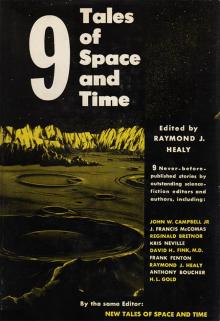 9 Tales of Space and Time
9 Tales of Space and Time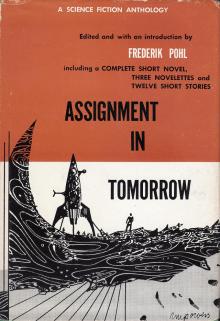 Assignment in Tomorrow
Assignment in Tomorrow![[What Might Have Been 03] Alternate Wars Read online](http://i1.bookreadfree.com/i/03/16/what_might_have_been_03_alternate_wars_preview.jpg) [What Might Have Been 03] Alternate Wars
[What Might Have Been 03] Alternate Wars The Complete Dangerous Visions
The Complete Dangerous Visions The IF Reader of Science Fiction
The IF Reader of Science Fiction Holiday in the Heart
Holiday in the Heart Torquere Press Sips and Shots
Torquere Press Sips and Shots Possess: An Alpha Anthology
Possess: An Alpha Anthology Beyond Control
Beyond Control Bad Boys Under the Mistletoe: A Begging for Bad Boys Collection
Bad Boys Under the Mistletoe: A Begging for Bad Boys Collection Hugo Awards: The Short Stories (Volume 3)
Hugo Awards: The Short Stories (Volume 3) The Second IF Reader of Science Fiction
The Second IF Reader of Science Fiction Astounding Science Fiction Stories Vol 1
Astounding Science Fiction Stories Vol 1 What Happens Over Spring Break: A Short Story Anthology
What Happens Over Spring Break: A Short Story Anthology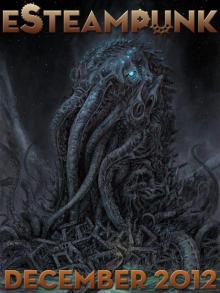 eSteampunk Vol. 01 No. 02
eSteampunk Vol. 01 No. 02 SHADOWRUN: Spells and Chrome (shadowrun)
SHADOWRUN: Spells and Chrome (shadowrun) Dark Tales
Dark Tales Getting Schooled (Craving #9)
Getting Schooled (Craving #9) The Hellfire Book of Beltane Volume One
The Hellfire Book of Beltane Volume One The Alpha's
The Alpha's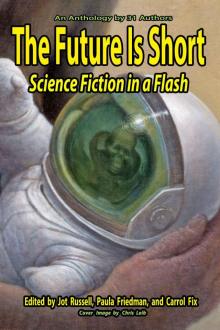 The Future Is Short
The Future Is Short From the Heart: A Valentine's Day Anthology
From the Heart: A Valentine's Day Anthology Reckless: A Bad Boyz Anthology
Reckless: A Bad Boyz Anthology LOL #3 Romantic Comedy Anthology
LOL #3 Romantic Comedy Anthology A Christmas Seduction: A Regency Anthology
A Christmas Seduction: A Regency Anthology All a Cowboy Wants for Christmas
All a Cowboy Wants for Christmas Hugo Awards: The Short Stories (Volume 2)
Hugo Awards: The Short Stories (Volume 2) The Golden Age of Science Fiction Novels Vol 01
The Golden Age of Science Fiction Novels Vol 01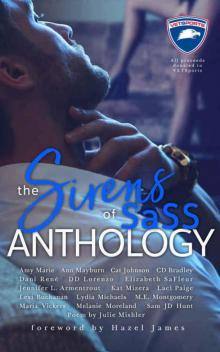 The Sirens of SaSS Anthology
The Sirens of SaSS Anthology Mistletoe & Kisses
Mistletoe & Kisses Explorers of Space
Explorers of Space Time Travel Omnibus Volume 2
Time Travel Omnibus Volume 2 Dead Science: A Zombie Anthology
Dead Science: A Zombie Anthology Beer Goggles Anthology
Beer Goggles Anthology Apexology: Horror
Apexology: Horror Heat Wave: A Summer Loving Anthology
Heat Wave: A Summer Loving Anthology Fall in Love
Fall in Love Love Under the Mistletoe
Love Under the Mistletoe Hook & Ladder 69: Eighteen Authors...One Sexy Firehouse.
Hook & Ladder 69: Eighteen Authors...One Sexy Firehouse. LOL #2 Romantic Comedy Anthology - Volume 2 - Even More All-New Romance Stories by Bestselling Authors (LOL Romantic Comedy Anthology #2)
LOL #2 Romantic Comedy Anthology - Volume 2 - Even More All-New Romance Stories by Bestselling Authors (LOL Romantic Comedy Anthology #2) Off the Beaten Path: Eight Tales of the Paranormal
Off the Beaten Path: Eight Tales of the Paranormal![Best New Zombie [3] - Best New Zombie Tales, Vol. 3 Read online](http://i1.bookreadfree.com/i/03/25/best_new_zombie_3_-_best_new_zombie_tales_vol_3_preview.jpg) Best New Zombie [3] - Best New Zombie Tales, Vol. 3
Best New Zombie [3] - Best New Zombie Tales, Vol. 3 The Golden Age of Science Fiction Novels Vol 05
The Golden Age of Science Fiction Novels Vol 05 Alphas of Sin
Alphas of Sin Halloween Spirits: 11 Tales for the Darkest Night
Halloween Spirits: 11 Tales for the Darkest Night Night Shift 2
Night Shift 2 Ellora's Cavemen: Jewels of the Nile II
Ellora's Cavemen: Jewels of the Nile II Hot for the Holidays (21 Holiday Short Stories): A Collection of Naughty and Nice Holiday Romances
Hot for the Holidays (21 Holiday Short Stories): A Collection of Naughty and Nice Holiday Romances Of Heaven and Hell
Of Heaven and Hell 12 Christmas Romances To Melt Your Heart
12 Christmas Romances To Melt Your Heart '90s Playlist (Romance Rewind #1)
'90s Playlist (Romance Rewind #1) Bleed Blue 69: Twenty-Five Authors…One Sexy Police Station
Bleed Blue 69: Twenty-Five Authors…One Sexy Police Station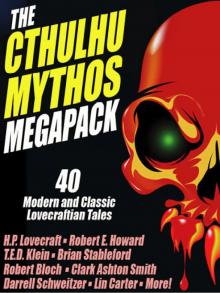 The Cthulhu Mythos Megapack (40 Modern and Classic Lovecraftian Tales)
The Cthulhu Mythos Megapack (40 Modern and Classic Lovecraftian Tales) Nova 3
Nova 3 Unbroken: 13 Stories Starring Disabled Teens
Unbroken: 13 Stories Starring Disabled Teens Dead Men (and Women) Walking
Dead Men (and Women) Walking Sweet Seduction
Sweet Seduction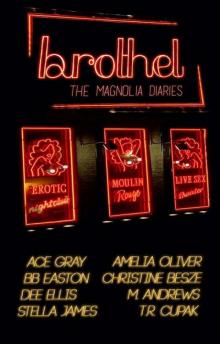 Brothel: The Magnolia Diaries
Brothel: The Magnolia Diaries Rogues (A Boys Behaving Badly Anthology #1)
Rogues (A Boys Behaving Badly Anthology #1) Best New Zombie Tales, Vol. 3
Best New Zombie Tales, Vol. 3![The Hellfire Bo [1] - The Hellfire Book of Beltane Volume One Read online](http://i1.bookreadfree.com/i1/04/06/the_hellfire_bo_1_-_the_hellfire_book_of_beltane_volume_one_preview.jpg) The Hellfire Bo [1] - The Hellfire Book of Beltane Volume One
The Hellfire Bo [1] - The Hellfire Book of Beltane Volume One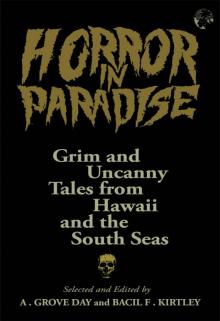 Horror in Paradise
Horror in Paradise Time Travel Omnibus Volume 1
Time Travel Omnibus Volume 1 More Than Words: Stories of Courage
More Than Words: Stories of Courage River Walk: Ten Kinky Collaborations
River Walk: Ten Kinky Collaborations F*cking Awkward
F*cking Awkward Hearts of England
Hearts of England The Golden Age of Science Fiction Novels Vol 03
The Golden Age of Science Fiction Novels Vol 03 Drunk in Love
Drunk in Love Up and Coming: Stories by the 2016 Campbell-Eligible Authors
Up and Coming: Stories by the 2016 Campbell-Eligible Authors Descended from Darkness: Apex Magazine Vol I
Descended from Darkness: Apex Magazine Vol I Dominant Persuasions Anthology: 12 Tales of D/s, Where Mastery Meets Passion
Dominant Persuasions Anthology: 12 Tales of D/s, Where Mastery Meets Passion The Golden Age of Science Fiction Novels Vol 04
The Golden Age of Science Fiction Novels Vol 04 Passion in Portland 2016 Anthology
Passion in Portland 2016 Anthology Men of Mayhem
Men of Mayhem The Dirty Anthology
The Dirty Anthology Hot For Teacher
Hot For Teacher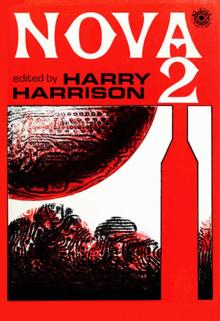 Nova 2
Nova 2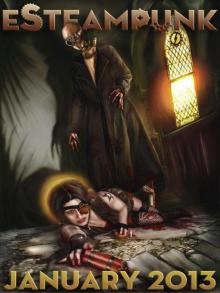 eSteampunk Vol. 01 No. 03
eSteampunk Vol. 01 No. 03 Afternoon Tea Mysteries Vol Three
Afternoon Tea Mysteries Vol Three Romance in the Rain
Romance in the Rain Tales From the Crossroad Volume 1
Tales From the Crossroad Volume 1 A Very Alpha Christmas
A Very Alpha Christmas Nova 1
Nova 1 Once: A Collection of Sinfully Sexy and Twisted Tales
Once: A Collection of Sinfully Sexy and Twisted Tales Nuts About You: A Testicular Cancer Anthology
Nuts About You: A Testicular Cancer Anthology From the Street (shadowrun stories)
From the Street (shadowrun stories) Box of 1Night Stands: 21 Sizzling Nights
Box of 1Night Stands: 21 Sizzling Nights Descended from Darkness: Vol II
Descended from Darkness: Vol II Pink Shades of Words: Walk 2016
Pink Shades of Words: Walk 2016 The Art of Taking Chances
The Art of Taking Chances The Butterfly Box_A SASS Anthology
The Butterfly Box_A SASS Anthology Harlan County Horrors
Harlan County Horrors![Afternoon Tea Mysteries [Vol Three] Read online](http://i1.bookreadfree.com/i2/04/12/afternoon_tea_mysteries_vol_three_preview.jpg) Afternoon Tea Mysteries [Vol Three]
Afternoon Tea Mysteries [Vol Three] The Golden Age of Science Fiction Novels Vol 02
The Golden Age of Science Fiction Novels Vol 02 Ellora's Cavemen: Jewels of the Nile III
Ellora's Cavemen: Jewels of the Nile III